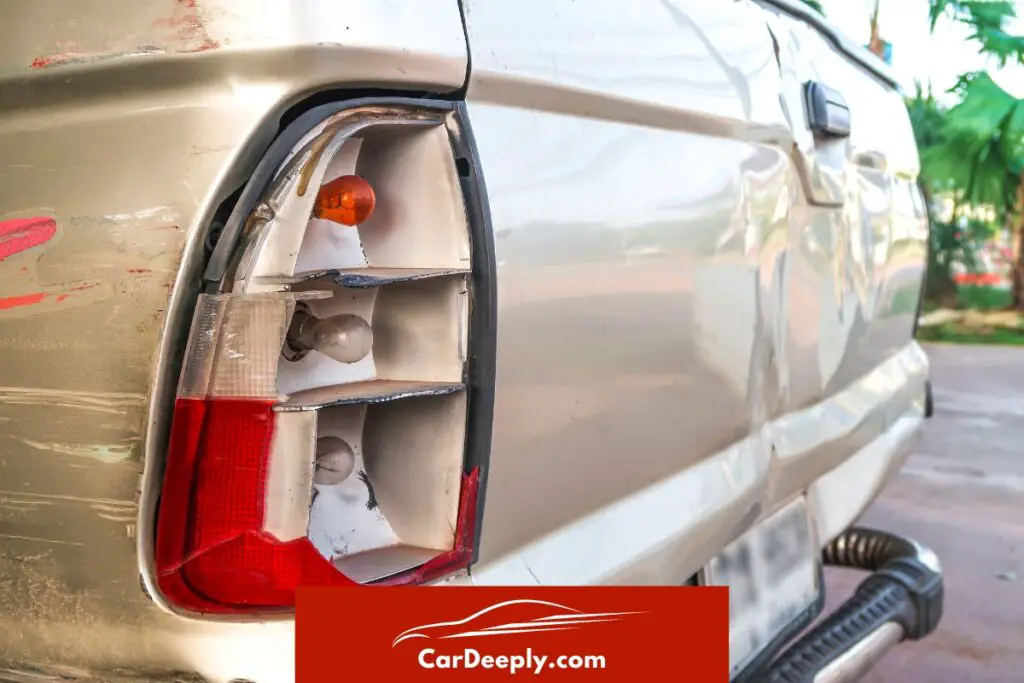Navigating the world of F150 bumper damage repair can be a daunting task. With this comprehensive guide, we’re here to simplify the process for you!
From a detailed breakdown of assessing bumper damage to a step-by-step DIY repair guide and finishing with insights into understanding insurance coverage for bumper repair, this guide is everything you need.
So, buckle up, and let’s dive into the nitty-gritty of repairing F150 bumper damage. You’re just a read away from becoming your bumper repair expert!
Advertising links are marked with *. We receive a small commission on sales, nothing changes for you.
Key Takeaways

- Understanding the type and extent of bumper damage is crucial for effective repair.
- DIY repair can save money but requires time, effort, and the right tools.
- Professional repair is often the best choice for severe damage.
- Insurance coverage for bumper repair can vary depending on your policy and the circumstances of the damage.
- Following a detailed repair process can help you effectively repair your F150 bumper damage.
Understanding F150 Bumper Damage and Its Repair
Understanding Bumper Damage
The bumper of your F150 plays a crucial role in vehicle safety, acting as the first line of defense in a collision. It’s designed to absorb the impact and protect the car’s vital components.
However, this means it’s often the first part to sustain damage. Bumper damage can range from minor scratches and dents to severe cracks and distortions. Understanding the type and extent of the damage is the first step toward effective repair.
Assessing the Damage
Before diving into the repair process, inspecting your F150 bumper thoroughly is essential. Here’s how you can do it:
- Visual Inspection: Look for visible signs of damage, such as scratches, dents, or cracks. Pay close attention to the edges and corners, as these areas are often prone to damage.
- Touch and Feel: Run your hands over the bumper to feel for any irregularities that might not be visible to the naked eye.
- Check for Alignment: Ensure that the bumper is still aligned with the rest of the vehicle. Misalignment could indicate more severe damage.
After assessing the damage, you must decide whether to repair or replace the bumper. Minor damage like scratches or small dents can often be repaired. However, replacement might be the more cost-effective option if the bumper is severely cracked or distorted.
The Process of Bumper Repair: Step-By-Step Guide
Repairing a damaged F150 bumper involves several steps, from reshaping the distorted area to applying the final color coat. Here’s a detailed breakdown of the process:
Step 1. Cleaning and Reshaping
Start by cleaning the damaged area with soap and water. Then, use a heat gun to soften the plastic and reshape the distorted area.
Step 2. Repairing the Crack
Use a hot air welder to repair any cracks. The heat will melt the plastic, allowing you to fuse the crack together.
Step 3. Front Side Preparation
Once the crack is repaired, prepare the front side for further repair. This involves sanding the area to create a rough surface for the filler to adhere to.
Step 4. Applying FiberFlex Welding Rod
Apply the FiberFlex welding rod to the sanded area. This will provide additional strength to the repair.
Step 5. Sanding and Smoothing
After the FiberFlex has cooled, sand the area until it’s smooth. This prepares the surface for the filler.
Step 6. Applying Filler and Adhesion Promoter
Apply a layer of filler to the repaired area, followed by an adhesion promoter. The promoter helps the filler bond with the plastic.
Step 7. Applying Texture and Color Coat
Finally, apply a texture coat to match the original texture of the bumper, followed by a color coat to match the bumper’s color.
By following these steps, you can effectively repair your F150 bumper damage and restore your vehicle to its original condition.
Practical Tips for Repairing F150 Bumper Damage
DIY vs Professional Repair
You have two main options when repairing F150 bumper damage: DIY or professional repair. Both have pros and cons, and the best choice depends on your situation.
DIY Repair: This option can save you money, especially if the damage is minor. You’ll also gain valuable skills and knowledge about your vehicle.
However, it requires time, effort, and the right tools. If you’re not comfortable with DIY projects or if the damage is severe, this might not be the best option.
Professional Repair: This is often the best choice for severe damage or if you’re uncomfortable repairing yourself. Professionals have the skills, tools, and experience to ensure a high-quality repair. However, this option can be more expensive.
Understanding Insurance Coverage for Bumper Repair
Insurance coverage for bumper repair can vary depending on your policy and the circumstances of the damage. Here are some key points to consider:
- Collision Coverage: If a collision caused the damage and you have collision coverage, your insurance should cover the repair cost.
- Comprehensive Coverage: If the damage was caused by something other than a collision (like vandalism or weather), and you have comprehensive coverage, your insurance should cover the repair cost.
- Deductible: Remember that you’ll need to pay your deductible before your insurance coverage kicks in.
By understanding your insurance coverage, you can decide on the best way to handle your F150 bumper repair.
Frequently Asked Questions
Can I use any type of filler for my F150 bumper repair?
No, using a filler specifically designed for automotive repairs, such as a plastic or bumper repair filler, is recommended. These fillers are designed to bond with the plastic and withstand the elements.
How long does it take to repair F150 bumper damage?
The time it takes to repair bumper damage can vary depending on the extent of the damage and your level of experience. However, most minor repairs can be completed in a few hours.
Can I drive my F150 with bumper damage?
While it’s technically possible to drive with bumper damage, it’s not recommended. The bumper plays a crucial role in vehicle safety, and any damage could compromise its ability to protect your vehicle in a collision.
What if I don’t have the right color coat for my bumper?
If you can’t find the exact color coat for your bumper, you can use a universal black or gray color coat. While it won’t be a perfect match, it will still provide a clean, finished look.
Can I prevent future bumper damage?
While preventing potential bumper damage is impossible, you can reduce the risk by driving carefully, parking in safe locations, and maintaining a safe distance from other vehicles.

Luna Meschiari is a full-blooded car nut who is well known to local garages, as each article is meticulously researched and peppered with the latest piece of information. Guess what car she’s driving right now? A RAV4 2021 Hybrid. But her heart also sleeps for pickups like the F-150. Get to know Luna better on the about us page.
Advertising links are marked with *. We receive a small commission on sales, nothing changes for you.
